Evolutionary Ecology
The department of Evolutionary Ecology gathers complementary skills in behavioural ecology, population dynamics, population biology, community ecology, and methodology (statistics and modelling). The research done in the department aims at studying how animal species evolve in a changing world by understanding the causes of the evolution of traits, adaptations and interactions. For that, we consider different levels of organization from individuals to populations and communities. Because organisms cannot be considered isolated from other biotic factors, we consider pathogens but also competing species within communities.
We study how individuals adapt to their environments that are largely impacted by anthropic pressures, and how life history traits and behaviour evolve in response to these pressures. Although we mainly focus on phenotype, we more and more consider the mechanistic link between the genotype and the phenotype. We develop the theoretical framework of our discipline through a conceptual and modeling approach. In parallel, we test hypotheses that arise from theoretical predictions through experimental, comparative and observational approaches on different biological models (insects, birds, mammals). Experimental approaches are developed in the laboratory (insect model) and in natura (bird, insect and mammal models). Observational and comparative research is mainly concerned with vertebrates. Our approaches are also, and increasingly, interested in the mechanisms of adaptive responses. In addition to the classical approaches of demographic analysis and trait change, methods of ecophysiology, chemical ecology and molecular biology are used.
Our department hosts several long-term studies of wild populations of different species. These long-term studies offer a valuable way to understand how biotic and abiotic factors affect individuals’ life history traits, and the functioning of populations in natura. Five populations of mammalian species are thus monitored for several years (more than 40 years on roe deer, 30 on Alpine marmots, 25 years on cats, 16 years on zebras, and 20 years on impala). Two of our study sites (La Sassière in Vanoise National Park (Alpine marmots) and Hwange National Park) have been certified as “Site d’Etude en Ecologie Globale” (SEEG), and two (ZA “Hwange” and ZA “Antarctic and sub-Antarctic”) were certified as “Zone Atelier” by the CNRS.
The department of Evolutionary ecology is also largely involved in training activities. Lastly, we also have strong socio-economic relationships. Indeed, because we address questions of major societal interest (global warming, public health) we tightly collaborate with socio-economic partners (Office Français de la Biodiversité, Vanoise National Park, Hwange National Park in Zimbabwe, Office National des Forêts, etc.) and participate to general public and media events.
Publications
Display of 1771 to 1800 publications on 2449 in total
ECOMIC-RMQS : biogéographie microbienne à l’échelle de la France. Etat d’avancement et premiers résultats
Étude et Gestion des Sols . 16 ( 3-4 ) : 219-231
Journal article
see the publicationEcophysiological attributes of adult overwintering in insects: insights from a field study of the nut weevil, Curculio nucum
Physiological Entomology . 34 : 61-70
Journal article
see the publicationBlackwell Publishing LtdA relict bank vole lineage highlights the biogeographic history of the Pyrenean region in Europe
Molecular Ecology . 18 : 2489-2502
Journal article
see the publicationLes Harttiini (Siluriformes, Loricariidae) des Guyanes : phylogénie et évolution des formes ou variation sur un même thème
4. Rencontres de l'Ichtyologie en France .
Conference paper
see the publicationStudent's Performance and Satisfaction with Web vs. paper-based practice quizzes and lecture notes
Computers and Education . 53 ( 2 ) : 375-384
Journal article
see the publicationDEBtox theory and matrix population models as helpful tools in understanding the interaction between toxic cyanobacteria and zooplankton
Journal of Theoretical Biology . 258 ( 3 ) : 380
Journal article
see the publicationToxicity of ivermectin on cladocerans: comparison of toxic effects on daphnia and ceriodaphnia species
Environmental Toxicology and Chemistry . 28(10) : 2160-2166
Journal article
see the publicationMatrix Population Models as Relevant Modeling Tools in Ecotoxicology
incollection . 2 : 261-298
Journal article
see the publicationDynamics of transposable elements:towards a community ecology of the genome
Trends in Genetics . 25(7) : 317-323
Journal article
see the publicationSpatially heterogeneous stochasticity and the adaptive diversification of dormancy
Journal of Evolutionary Biology . 22 : 2094-2103
Journal article
see the publicationReBaStaBa: handling Bayesian networks with R
The R User Conference 2009 .
Conference paper
see the publicationFitting parametric distributions using R : the fitdistrplus package
The 5th R useR conference Agrocampus Ouest . : 47
Conference paper
see the publicationQuantitative Risk Assessment of Listeria monocytogenes in French cold-smoked Salmon: II. Risk Characterization
Risk Analysis . 29 ( 6 ) : 806-819
Journal article
see the publicationFate of acid-resistant and non-acid resistant Shiga toxin-producing Escherichia coli strains in experimentally contaminated French fermented raw meat sausages
International Journal of Food Microbiology . 129(3) : 264-270
Journal article
see the publicationWhat matters in the associative learning of visual cues in foraging parasitoid wasps: colour or brightness?
Animal Cognition . : epub ahead of print
Journal article
see the publicationDifferential use of conspecific-derived information by sexual and asexual parasitic wasps exploiting partially depleted host patches
Behavioral Ecology and Sociobiology . 63 : 563-572
Journal article
see the publicationEmpirical Evidence of Density‐Dependence in Populations of Large Herbivores
Advances in Ecological Research . 41 : 313-357
Journal article
see the publicationMemory keeps you at home: a mechanistic model for home range emergence
Oikos . 188 ( 5 ) : 641--652
Journal article
see the publicationWhat determines global positioning system fix success when monitoring free-ranging mouflon?
European Journal of Wildlife Research . 55 : 603-613
Journal article
see the publicationAdaptive dynamics of dormancy duration variability: evolutionary trade-off and priority effect lead to suboptimal adaptation.
Evolution - International Journal of Organic Evolution . 63 ( 7 ) : 1879-92
Journal article
see the publicationUsing Dynamic Stochastic Modelling to Estimate Population Risk Factors in Infectious Disease: The Example of FIV in 15 Cat Populations
PLoS ONE . 4(10) : 1-13
Journal article
see the publicationEmergence of infectious diseases: when hidden pathogens break out
Comptes Rendus. Biologies . 332(6) : 539-547
Journal article
see the publicationHeterochronic shifts explain variations in a sequentially developing repeated pattern: Palatal ridges of muroid rodents
16. Annual Conference of the International Society of-Development-Biologists . 126
Conference paper
see the publicationRodent Biodiversity in Changing Environments
Kasetsart . 43 : 83-93
Journal article
see the publicationDevelopmental constraints revealed by co-variation within and among molar rows in two murine rodents.
Evolution and Development . 11 ( 5 ) : 590-602
Journal article
see the publicationThe effects of experimentally manipulated yolk androgens on growth and immune function of male and female nestling collared flycatchers TextitFicedula albicollis
Journal of Avian Biology . 40(2) : 225-230
Journal article
see the publicationFinding essential scales of spatial variation in ecological data: a multivariate approach
Ecography . 32(1) : 161-168
Journal article
see the publicationThe concept of animals trajectories from a data analysis perspective
Ecological Informatics . 4 ( 1 ) : 34-41
Journal article
see the publication
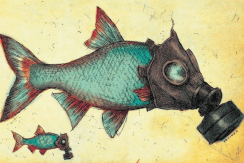
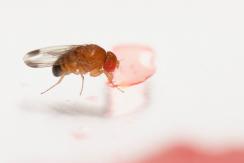
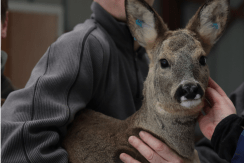
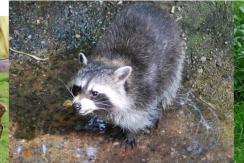
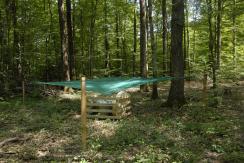
You also, comment on this article